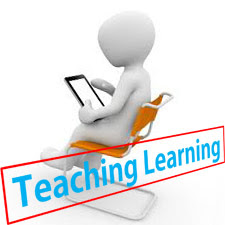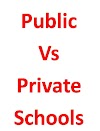Introduction
Discussion
Writing is productive and last skill of language in natural order. Writing is that kind of skill where the learners produce a sequence of sentences arranged in a particular order and those sentences are linked together in certain ways. Obviously, writing skill has become the most powerful pedagogical tool in the field of language teaching since the emergence of Grammar Translation Method. Most of the classroom as well as examination activities are, by and large, dependent upon writing system. In this sense, writing is often needed for formal and informal testing. Writing activity provides a variety in classroom activities where only oral practice is focused. In that situation, writing activity serves as a break and students can utilize their imagination and creativity through written discourse.
Components of Writing
Writing is not a simple task in the sense that it is not merely an activity of encoding verbal idea and thought in printed or written symbols. Furthermore, it consists of a number of other components. They are given below.
i. Mechanics
It is also known as graphological system; mechanics refers to
those aspects of writing such as spelling, use of punctuation marks which are
often dealt within the revision or editing stage of writing. Many students
whose native-language orthography is very different from English have
difficulty in forming English letters. Such students should get special
training. The incorrect spelling obviously may affect the reader's judgment
even though it does not often prevent the understanding of a written message.
However, at times slight change in spelling of words can bring drastic change
in the meaning they express. One of the reasons that spelling is difficult for
students of English as a foreign language is that the correspondence between
the sound of a word and the way it is spelt is not obvious. Similarly, overuse
or underuse of punctuation is often frowned on by many writers or editors of
English. Many scholars take punctuation is frequently a matter of personal style
but violation of well-established customs certainly makes a piece of writing
look awkward to many readers.
ii. Coherence
Coherence refers to the relationship between an utterance and the
meaning it conveys. It is the semantic relationship of different sense units
between and among the utterances. These links may be based on the shared knowledge
between the writer and the readers. For example,
Tom: What time is
it?
Rose: Sorry, sir. There was a traffic jam.
There is no grammatical or lexical link between Tom’s question and Rose’s reply but the exchange has coherence because both Tom and Rose know that Tom is asking why Rose is late, and Rose is replying that with the reasons.
iii. Cohesion
It refers to the grammatical or lexical relationship between different elements of a text. It is obviously seen that the relationship is the relationship between different sentences or between different parts of a sentence. For example,
A.
Is John going to Delhi?
B.
No, he is not going there.
There is a link between 'John' and 'he', between 'is' …………. and
……. 'going', and between 'Delhi' and 'there'.
There are two levels of cohesion. They are:
-
Sentential (intrasentential) cohesion.
-
Textual (intersentential) cohesion.
Sentential cohesion as its name suggests happens within a sentence
whereas textual cohesion occurs across or beyond a single sentence.
iv. Orthographic and Para-orthographic Text
The orthographic system deals with linguistic symbols such as spelling,
words, phrases, clauses, sentences etc. and para-orthographic text is related
to the use of diagram, figure, symbols, etc. The detailed knowledge of the
orthographic text is a complex skill.
Orthographic text mainly deals with:
a.
Complexity and irregularity in (English) spelling
b.
Outstanding spelling eg. tough, cough, dought, heard dreadful,
beard and leopard, people, theory etc.
c.
The spelling of loan words for eg.
ghee (borrowed form Hindi).
campus (borrowed from Latin).
restaurant (borrowed from French).
d.
Writing direction eg.
Left to right (English, Nepali).
Right to left ( Urdu).
Top to bottom (Japanese) etc.
e.
Syllable pattern/ structure eg.
Consonant clusters.
Doubling of consonants etc.
Para orthographic text deals with
a.
Converting a text into chart, diagram etc.
b.
interpreting charts, diagrams etc. into orthographics.
c.
writing from maps, graphs, statistical data etc.
d.
writing something in the form of table, chart, diagram etc.
Conclusion
Thus, the introduction and practice of some form of writing enables the students to provide for different learning style and needs. The students who do not learn easily through oral practice find writing as a paramount aid to retention. Hence, writing skill is equally important for those people who are linguistically dumb when they are supposed to speak. It has been remarked that writing is the most difficult of the language abilities to acquire or to learn. In learning writing skill there is not difficulty only in generating and organizing ideas, but the learners equally feel challenging in translating these ideas into readable text also. In simple terms, writing is a productive skill which involves manipulating, structuring and communicating. The skills involved in writing are highly complex. So, while teaching writing, the teachers have to pay attention to higher level skills of planning and organizing to higher graders and lower level skills of spelling punctuation, word choice and so on to lower graders.
Cross, D.
1992. A Practical Handbook of Language
Teaching.
Mertfordshire : Prentic Hall.
Doff, A.
1985. Teach English. A Training
Course for Teachers. Teachers Handbook Cambridge : CUP.
Ur, P. 1996. A Course in Language Teaching. Cambridge : CUP.










0 Comments